Before you start any journey, preparation needs to be put in, and cost becomes an important consideration in that. The blog "How Much Does Kailash Mansarovar Yatra Cost" aims to be a one-stop-shop for information on all the costs involved in organizing the Kailash Mansarovar Yatra. The blog recognizes the importance of financial planning for this once in a lifetime pilgrimage and endeavors to provide a clear expense breakdown. It will explore the three primary routes: via Drive through Kyirong Border, By Helicopter via Nepalgunj, and via drive through Lhasa. Each of the routes will be explained with a rough itinerary.
The journey cost would usually start with travel filled with airplane tickets or other modes of transport to get down at Kathmandu, Nepal, usually the point of departure. Then there comes the getting of permits and visas to travel in that region that is quite a lot of money, and fees for obtaining the Chinese visa and the Tibet Travel Permit would just add to the initial investment. Most of the pilgrims get the tour packages that have widely different charges depending on accommodation types, whether meals are included or not, and what additional services might be included. Being aware of these cost components aids in planning ahead and gives an understanding of the trip's structure and where costs might be diverted. Hence, this lets all pilgrims concentrate on the spiritual importance of the journey without any stress of money.
Also Read: How Difficult is Kailash Mansarovar Yatra
What is Kailash Mansarovar Yatra?
The Kailash Mansarovar Yatra is a spiritual sojourn throughout Mount Kailash and Lake Manasarovar in the Himalayas for Hindus, Buddhists, Jains, and Bon. The pilgrimage is understood as a significant act of liberation, and so high altitudes are traversed for nearly 10 days. Mount Kailash is regarded as the seat of Lord Shiva, and Lake Manasarovar is holy to these religions. Besides leisure and hospitality, the yatra extends into spiritual realms, with their aura of transfiguration attracting sightseers.
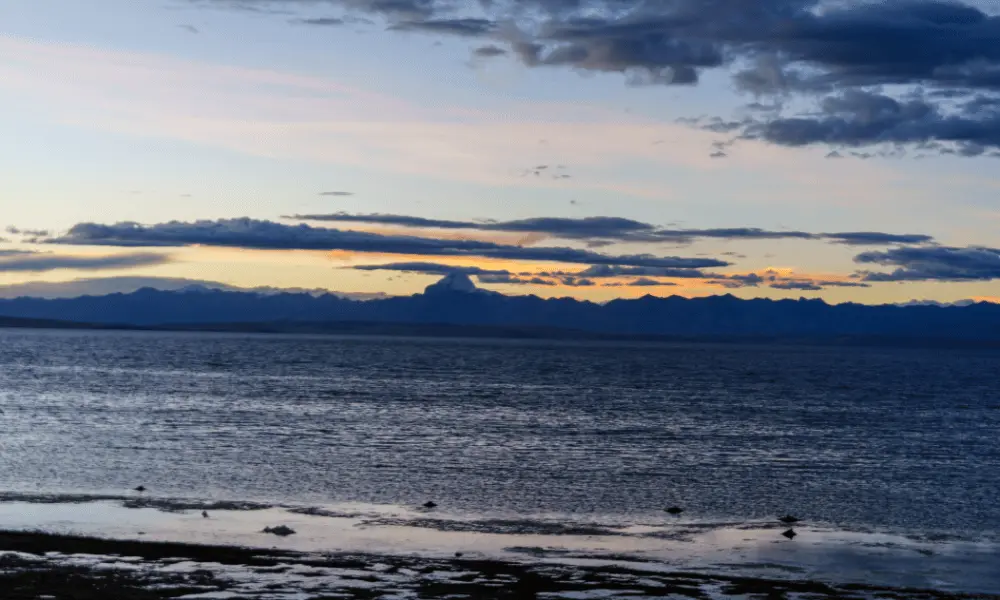
Pilgrimages typically gather in Kathmandu, Nepal, before beginning the journey. From here, the yatris first travel overland to the Kyirong border or fly to the town of Hilsa, and then the arduous journey takes a different turn-over rugged paths by vehicle and then on foot to reach Lake Manasarovar and do parikrama of Mount Kailash. The difficulties of stark altitudes and terrain keep it hard, but it is still fulfilling for clarity and enlightenment through spiritual purification for the chosen. The Yatris perform several rites, including parikrama circumambulation of Mount Kailash and holy dipping with the crystal-clear waters of Lake Mansarovar, which is said to wash away the sin and grant spiritual liberation. The entire Kailash Mansarovar Yatra stands as a test of one's stamina, willpower, and faith and is considered an ultimate once in an entire lifetime pilgrimage for the worthy seeking spiritual transformation.
Learn More: Kailash Mansarovar Yatra
How Much Does the Yatra Cost?
The lure of the Himalayas has always existed among the travellers. For a lot of people, a trip to Mount Kailash and Lake Mansarovar is almost a dream. But once the people decide to undertake the trip, they must at least be aware of the costs involved. Here is a cost breakdown per route undertaken:
|
Route |
Cost |
|
By Drive via Kyirong border (Group Joining) |
USD 3000 per person |
|
By Drive via Kyirong border (Private) |
USD 5000 per person (2-3 pax) USD 4500 per person (4-6 pax) |
|
By Helicopter via Nepalgunj (Group Joining) |
USD 5000 per person |
|
By Drive via Lhasa (Private) |
USD 6200 per person |
Note: The above cost is based on the year 2025; please check our packages for updated costs.
Major Cost Influencing Factors
Regarding the budget for the sacred Kailash Mansarovar Yatra, the prices are always affected by various factors. The time chosen to travel is of utmost importance. Transportation prices are always higher during peak seasons, accommodations usually charge higher rates, and so do various services. A mode of transport in itself can overly affect the cost of travel. For instance, an air ticket might be costlier than on-road travel or vice versa. Accommodation-wise, one can choose anything from cheap guesthouses to five-star hotels in Nepal and try to curb some of the expenditures.
An understanding of these elements, coupled with the application of budgeting strategies like booking well in advance and choosing cost-effective means, may, therefore, provide some relief in treating different financial aspects of the Kailash Mansarovar Yatra and ensuring that the spiritually fulfilling journey remains within the pilgrim's means. Information about it is provided here:
|
Trip Type |
|
Route Choice |
|
Accommodation |
|
Modes of Transportation |
|
Number of Support Team |
|
Package Inclusion |
|
Duration |
|
Nationality |
Trip Type
It is the journey that counts, and travel expenses can fluctuate depending upon many conditions, with one's favorite style being one such condition. Here’s a further explanation of the cost differences between a private and group tour.
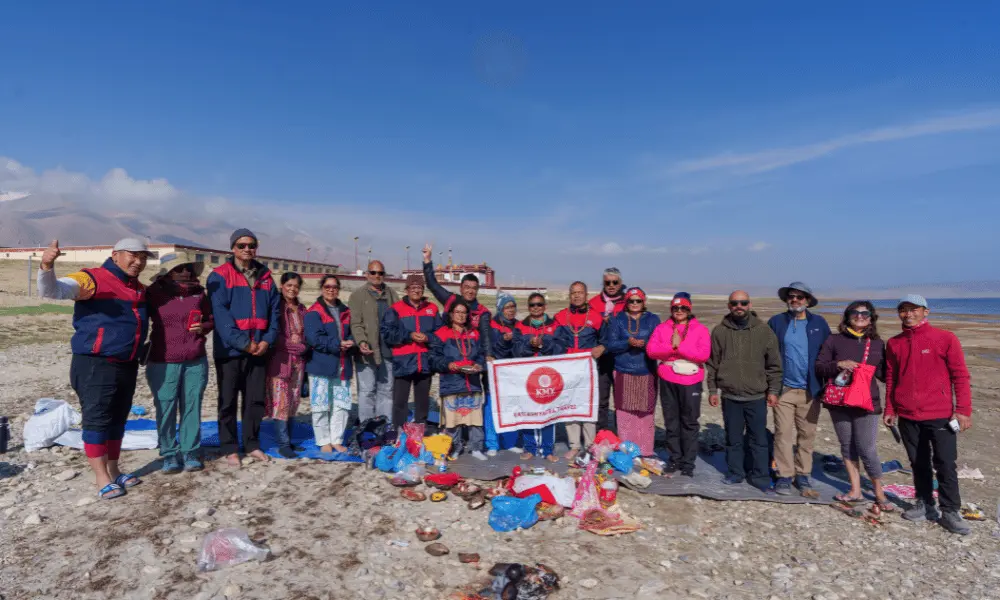
Group Joining Tours
Generally, group tours are composed of joint groups having 20 or more people in one group. Group tours give cheaper pilgrimage packages since costs are split among transportation, accommodation, guide fee, and so forth. Thus, group tours are really great for pilgrims who want to keep expenses to a minimum while still pursuing the sacred journey. Group tours, while typically limiting flexibility in terms of itinerary and may provide for more basic forms of accommodation, establish a framework; this can be very important, especially for first-time pilgrims.
Private Tours
Private Kailash tour involves smaller groups from 2-3 to 4-6 individuals, so the experience and services may be customized for each individual with a paid guide, a specially designed schedule, better-sourced lodging, and transportation to match. The benefits of private tours include flexibility and customized services, but since they are so exclusive and have so many possibilities, they are also typically more expensive than group excursions. Pilgrims should budget for all of the increased costs of a private trip, including lodging, transportation, and support services. Excellent for people who do not mind paying for such a perk and who desire a flexible and personalized journey.
Related Packages: Private Trips
Route Choice
When travelling through Nepal, there are different options of going to Kailash Mansarovar, contingent upon your preference and how comfortable you want the journey to be. The road can be chosen via air from Nepalgunj and then by road from the Kyirong border or Lhasa. The route chosen also determines the Yatra expenses, with flying costing more than driving.
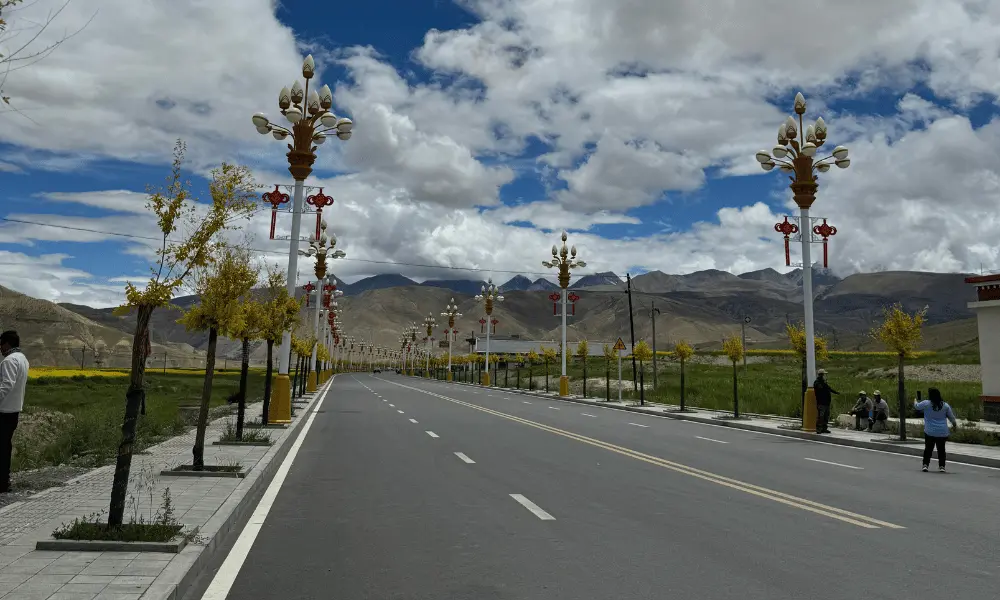
By Drive via Kyirong border
The most affordable way of travelling is usually by the Kyirong border. This means overland through Nepal, crossing at the Kyirong border to Tibet. Since this route involves no flight with maybe even a split in the transport fare with fellow pilgrims, it is usually on the cheaper side. Sometimes, though, the long time spent in high-altitude drive, it might require an extra day or two to get acclimatised, which would increase your stay and expenses.
Outline Itinerary
|
DAY 01: Kathmandu Arrival. |
|
DAY 02: Visa Application, Kathmandu Sightseeing. |
|
DAY 03: Bhaktapur Sightseeing, Nagarkot Stay. |
|
DAY 04: Chandragiri and Swayambhunath Sightseeing. |
|
DAY 05: Packing and Final Preparation. |
|
DAY 06: Drive to Dhunche or Syabrubesi or Timure. |
|
DAY 07: Drive to Kyirong. (2850 m) |
|
DAY 08: Kyirong Acclimatisation. |
|
DAY 09: Drive to Saga. (4500 m) |
|
DAY 10: Drive to Lake Mansarovar. (4600 m) |
|
DAY 11: Drive to Darchen. (4700 m) |
|
DAY 12: Drive to Yama Dwara, Trek to Deruphuk. (5050 m) |
|
DAY 13: Trek to Zuthulpuk. (4800 m) |
|
DAY 14: Zuthulphuk to Saga. |
|
DAY 15: Drive back to Kyirong. (2850 m) |
|
DAY 16: Drive to Kathmandu. |
|
DAY 17: Transfer to Airport. |
Learn More: Kailash Mansarovar Yatra by Drive via Kyirong
By Helicopter via Nepalgunj
This route is much more expensive but convenient and time-saving. This route involves flying from Kathmandu to Nepalgunj, from where a helicopter will take you to Simikot, and then drive to the Tibet border. The expense is higher because it pays for helicopter services and extra flights, which are, however, quicker and less physically draining than travelling by road. This will suit those who do not want the longer physical grind just to save money on expenses.
Outline Itinerary
|
DAY 01: Kathmandu Arrival. |
|
DAY 02: Visa Application, Kathmandu Sightseeing. |
|
DAY 03: Bhaktapur Sightseeing. |
|
Day 04: Chandragiri Sightseeing. |
|
Day 05: Packing, Fly to Nepalgunj. |
|
Day 06: Fly from Nepalgunj to Simikot. (2812 m) |
|
Day 07: Simikot to Hilsa to Taklakot. (3900 m) |
|
Day 08: Acclimatisation day at Taklakot. |
|
Day 09: Drive from Taklakot to Lake Mansarovar. (4650 m) |
|
Day 10: Drive to Yama Dwara, Trek to Derapuk. (5050 m) |
|
Day 11: Trek to Zuthulpuk. (4800 m) |
|
Day 12: Zuthulpuk to Hilsa or Simikot. |
|
Day 13: Hilsa to Simikot, Fly back to Kathmandu via Nepalgunj. |
|
Day 14: Departure. |
Learn More: Kailash Mansarovar Yatra by Helicopter via Nepalgunj
By Flight via Lhasa
The flight and road trip route over Lhasa is another very popular route, typically on the pricier side. This itinerary includes flying into Lhasa, the capital of Tibet, then driving onwards to Kailash and Mansarovar. The expensive fares to Lhasa, the need to obtain more permits, and more luxurious accommodation at Lhasa make the cost higher for this route. This alternative will allow pilgrims to have a rich cultural experience, with the time to visit some of their historical and spiritually important sights in Lhasa before heading on.
Outline Itinerary
|
DAY 01: Kathmandu Arrival. |
|
DAY 02: Visa Application, Kathmandu Sightseeing. |
|
Day 03: Bhaktapur Sightseeing. |
|
DAY 04: Visa Collection, Trip Preparation. |
|
DAY 05: Fly to Lhasa. |
|
DAY 06: Lhasa Sightseeing. |
|
DAY 07: Lhasa Sightseeing. |
|
DAY 08: Drive to Shigatse, Enroute Sightseeing. |
|
DAY 09: Drive to Tingri (4348 m), Explore Everest Base Camp. |
|
DAY 10: Drive to Saga. (4500 m) |
|
DAY 11: Drive from Saga to Lake Mansarovar. (4650 m) |
|
DAY 12: Drive to Darchen. (4700 m) |
|
DAY 13: Drive to Yama Dwar, Trek to Derapuk. (5050 m) |
|
DAY 14: Trek to Zuthulpuk, Drive to Darchen. (4650 m) |
|
DAY 15: Drive to Kyirong. |
|
DAY 16: Drive to Kathmandu. |
|
DAY 17: Departure. |
Learn More: Kailash Mansarovar Yatra by Flight via Lhasa
Accommodation
A major factor in deciding the price of the Kailash Mansarovar Yatra is the choice of lodging on both the Nepali and Tibetan sides. The cost of traveling there will go up as comfort levels rise, thus pilgrims must balance their need for comfort with their financial limitations.
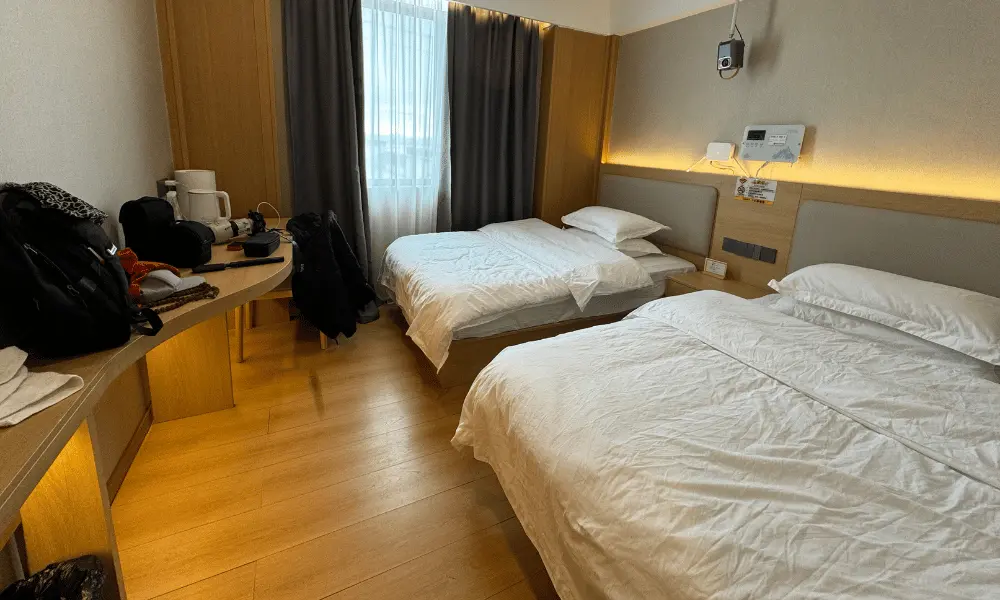
Nepal Side
In Kathmandu, Nepal, you will find accommodations to suit all your needs, ranging from low-cost lodging to five-star establishments. In general, the level of comfort and amenities is significantly higher than what is provided on the Tibetan side. However, as one approaches the border, lodging becomes more basic due to the existence of guest houses that provide guests with shared amenities. The cost of your journey depends on whatever lodging option you select. The total cost of the Yatra will increase with the level of luxury and star rating of the hotel you select.
Tibet Side
Accommodations on the tibet side also range from luxury to basic and modest because the yatra passes through remote areas. In city areas, hotel accommodations range from 3 to 5 stars, while during the trek portion of the yatra, the accommodations and services are bare minimum, with some places not even having proper toilets. However, dependable and comfortable lodging is only available with the most basic amenities, including power.
Modes of Transportation
Whatever mode of transportation one chooses, reliable access to the final destination should reassure one of comfort and safety during the whole journey. Different transportation facilities for Nepal and Tibet are offered by the Kailash Mansarovar Yatra, which have a bearing upon the rates and depend on the number of persons going along and on the travel style selected.
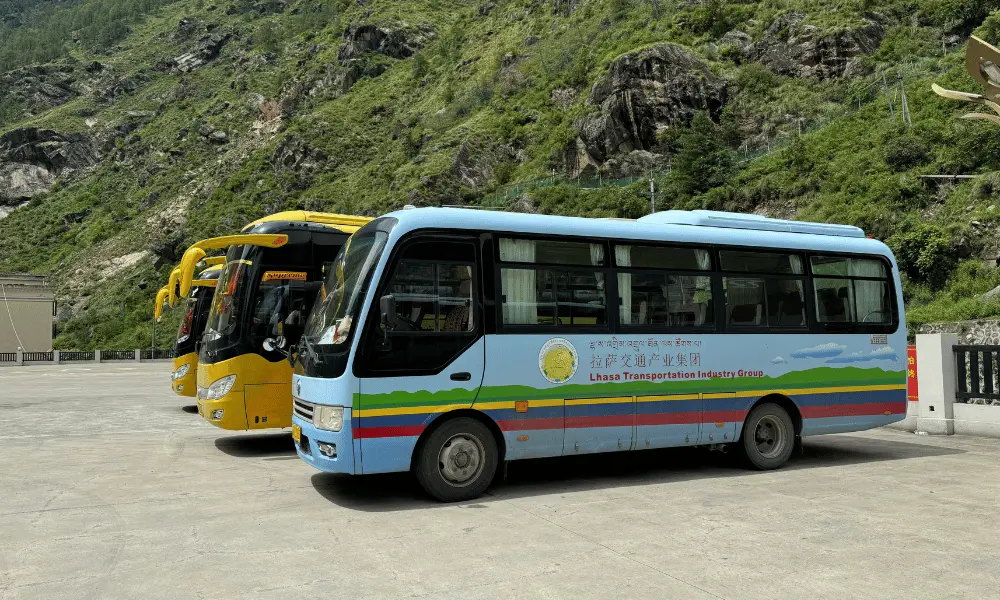
On the Nepal Side
Road and air transport both exist in Nepal. Depending on their comfort, pilgrims can certainly take a bus or a jeep out to the yatra starting point en route, by road. Those with few time and money constraints will take flight from Kathmandu to Nepalgunj and then to Simikot, and further by helicopter to Hilsa, for the highest level of convenience.
On the Tibet Side
Shared transports used by group tours comprise coaches/buses and private vehicles that enhance personalization with jeeps/cars. Transport-wise, roads still dominate in Tibet due to its remote landscapes and the raw beauty one can enjoy throughout the drive.
Number of Support Team
The size and makeup of the support team for the yatris are very decisive factors in the safe and comfortable organization of the pilgrimage. Usually, an English speaking guide from Nepal, an English speaking guide from Tibet, and a cook staff form your support team for smaller groups of 2-3 persons. If you want to increase the number of supporting staff, you may do so as suited to your group, which will duly increase the Yatra cost.
Package Inclusion
Package inclusions directly determine the Kailash Mansarovar Yatra cost by dictating what particular services and amenities are to be dispensed. The main drivers of cost are mandatory permits, visas, the choice of an expensive helicopter vs. longer overland transportation, the level of accommodation (from basic Kora guesthouses to Kathmandu hotels), meals, and of course, the presence of expert guides and support staff. High-altitude medical support, such as a first aid kit, Gamow bag, and oxygen cylinder is adjacent to this, with optional sightseeing or rituals adding to the overall cost, which entails the logistics and altitude demands of the pilgrimage.
Duration
The duration of the Kailash Mansarovar Yatra is a big factor in determining cost because with each added day there are increased expenses for hotels, food, wages for the employees, and vehicle hire. The longer the itineraries, especially when they incorporate required acclimatization days or extended sightseeing at Lhasa, the more expensive it gets by trading off on, probably, the varying per-day charge on a route (helicopter routes costing more balancing with long overland routes costing less per day anyway).
Nationality
Perhaps the costs do not differ much by nationality, but certain privileges available to Indian nationals help in reducing the Yatra cost. Let's see:
Nepali
The Nepali citizens are the ones who have to bear the least cost, as they can directly travel to Tibet from Nepal, which cuts down the expenses in Kathmandu that other nationals need to bear. The only expense they will have is from the Tibet side.
Learn More: KMY Packages for Nepali
NRIs/Foreigners
The cost of Kailash Yatra for the foreign national is more expensive than for Indians/Nepalis due to the extra stay in Kathmandu for Chinese visa processing. Other expenses foreign pilgrims may need to cash out are travel insurance, processing fees for visa, and charges against currency exchange.
Learn More: KMY Packages for NRIs/Foreigners
Indians
Indian citizens have some privileges of completing their visa procedures in Delhi hence the need to stay shorter in Kathmandu which lowers their Kailash Yatra cost. However, the higher permit fees and strict visa process (delay in some cases) increase their cost. Their other possible expenses include travel, accommodation, food, and support services.
Learn More: KMY Packages for Indians
A careful study of the above factors will make it possible for you to pick a Kailash Mansarovar Yatra Package according to your budget and comfort.
Money Saving Tips
Kailash Mansarovar Yatra is a costly journey which involves crossing multiple international borders. A few tips will help you to save some money, even if just a small amount here and there. Here are some money-saving tips to help you out during the Kailash Mansarovar Yatra:

Choose Your Route Wisely
The chosen route has a lot to do with the total cost. Being the cheapest overland route, going by way of Nepal and the Kyirong border is best. Though slower, the gain in money over helicopter or flight options offered to the traveller far outweighs the slower journey. These options come with speed and comfort, but on the very steep side of cost, so these would work only if you really cannot afford to spend time on the journey or there are exceptional medical reasons.
Early Booking
Much of the time, making your booking early cuts down on tour prices as operators offer discounts for early reservations. It is also the best way to ensure availability of space and accommodation, mainly on popular routes.
Traveling in a Group
It has been found that one of the best ways to keep expenses down for the individual is for you to join a group. Traveling in groups means one shares the major costs of transportation, lodging, and guides, saving 20 to 30% on average per person for the pilgrimage. Most tour agencies offer group packages bundled to ease logistics and offer better value.
Choose a Reputable Tour Operator
Opting for a reputed and experienced tour operator obviously saves the traveler from hidden costs along the way and provides greater overall value for money. A transparent operator will provide a list of inclusions and exclusions, have the ability to expedite with very complex permit processes, be able to render emergency support in a major crisis, and protect the road traveler from unexpected expenses, thus guaranteeing a safer journey for all involved.
Also Read: Things to Know Before visiting Kailash Mansarovar
Conclusion
Kailash Mansarovar Yatra is a profound spiritual journey of physical endurance and the magnificence of nature. There are numerous yatra packages for all tastes and budgets. The yatra will be more expensive on account of better accommodations and superior routes that involve helicopter rides. The budget ones, however, are designed to cater to the needs of those with fewer resources.
There are additional expenses to be considered like travel insurance, personal expenses, or simply anything that shouldn't come up during the trip but may somehow do. The blog named "How Much Does Kailash Mansarovar Yatra Cost" provided above will surely help in the proper preparation, both financially and physically, so that the journey becomes a memorable experience and also spiritually enriching.
Frequently Asked Questions (FAQs)
Here are some FAQs for Kailash Mansarovar Yatra:
Is it possible to customize the yatra to fit different preferences?
Yes, the yatra provides various packages and options that accommodate differing budgets and tastes. Travelers may select budget or higher end accommodations in Nepal, different avenues of transportation and route choices depending on their requirements.
How can I manage currency exchange and payment methods during the Yatra?
It is wise for pilgrims to think about currency exchange and payment methods beforehand, taking into account issues such as currency rate, ATM availability, and accepted payment methods on both the Nepali and Tibet sides. On the Nepal side, ATMs are easy to find in accessible areas, while most locations accept credit cards. Though, carrying cash might be better for you. You can exchange currency at the currency exchange center in Nepal or have it exchanged for you by the travel agency you are traveling with.
What permits are required for the yatra?
Every foreign visitor requires a Tibet Travel Permit to enter Tibet. The permit mentions your tour group number, tour date, daily itinerary, and tour operator. This permit is usually given to travellers from their tour operators. Moreover, Humla Restricted Area Permit fees will be charged if you take the road route via Hilsa.

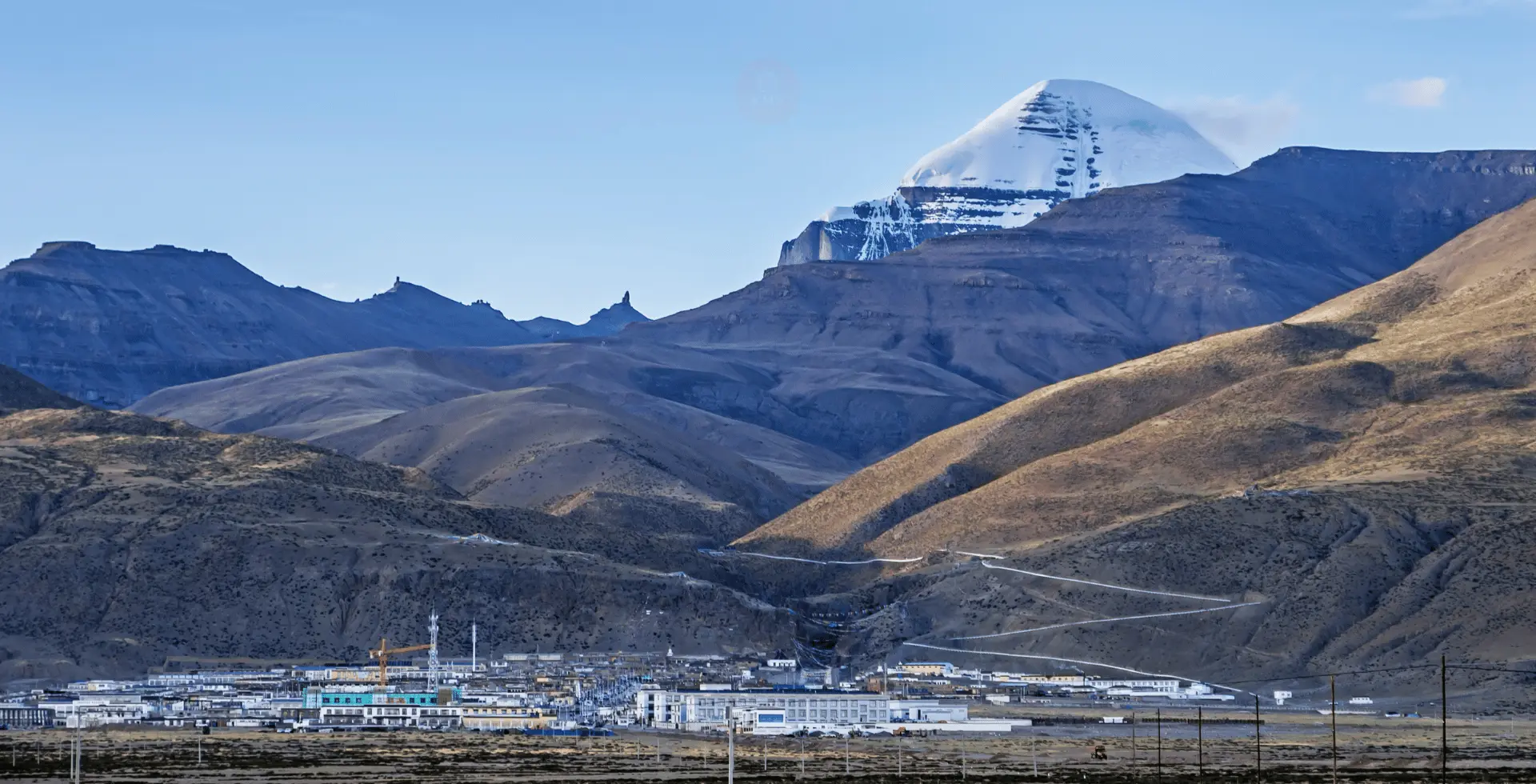
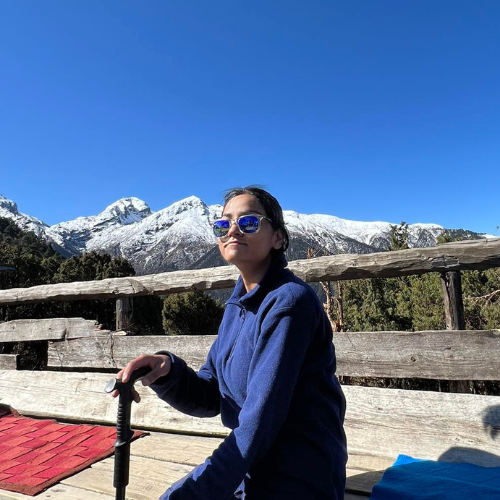 Mandira Itani
Mandira Itani